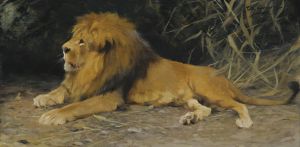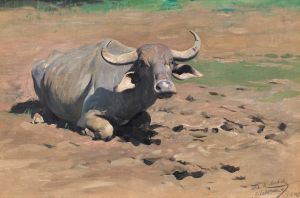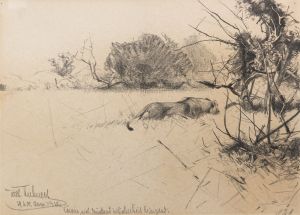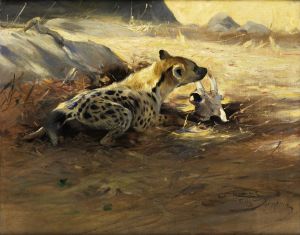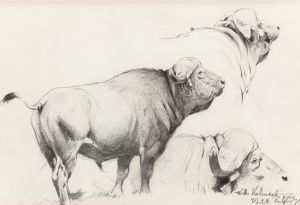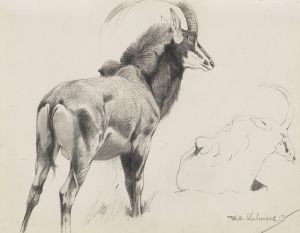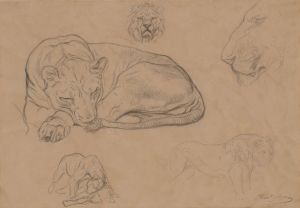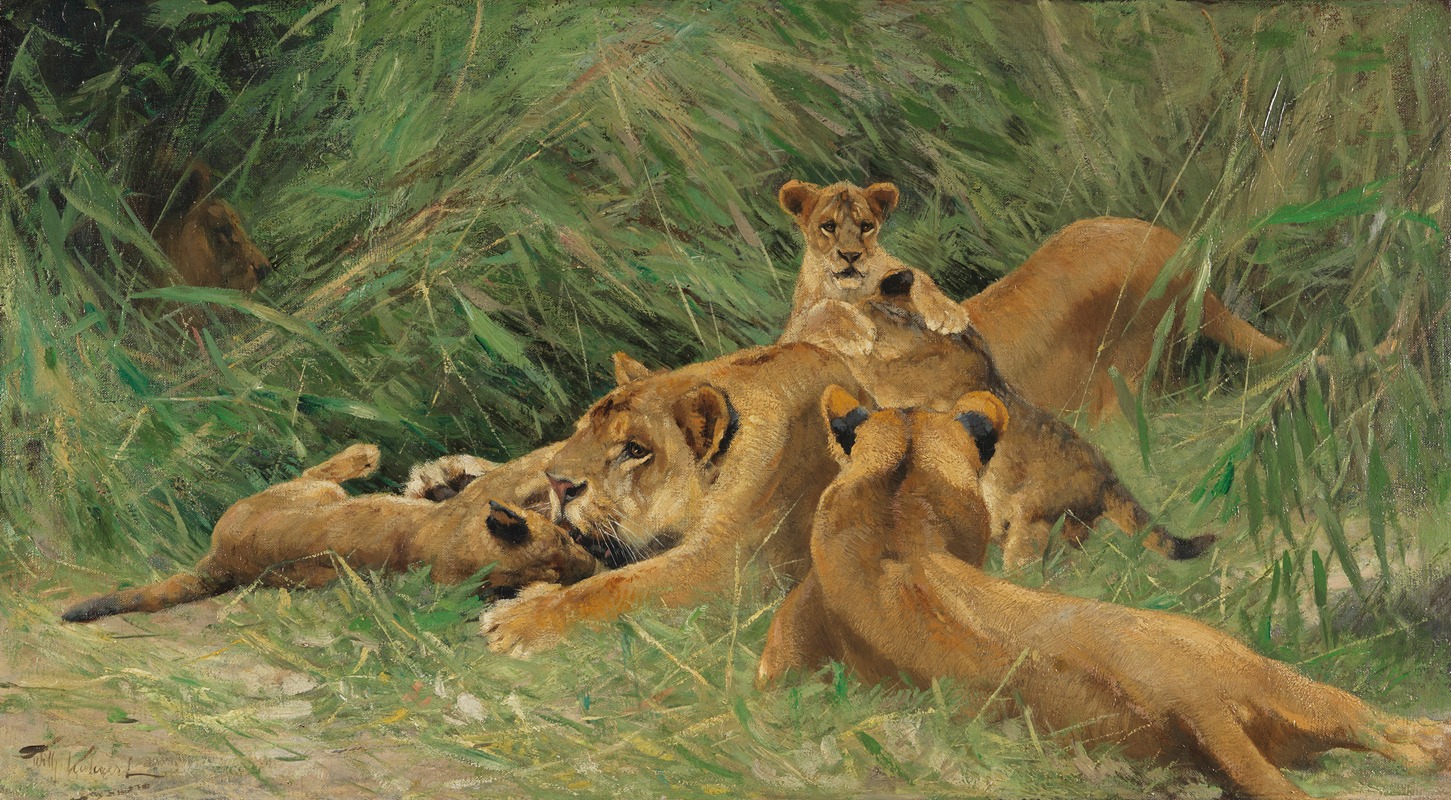
Spielende Löwen
A hand-painted replica of Wilhelm Kuhnert’s masterpiece Spielende Löwen, meticulously crafted by professional artists to capture the true essence of the original. Each piece is created with museum-quality canvas and rare mineral pigments, carefully painted by experienced artists with delicate brushstrokes and rich, layered colors to perfectly recreate the texture of the original artwork. Unlike machine-printed reproductions, this hand-painted version brings the painting to life, infused with the artist’s emotions and skill in every stroke. Whether for personal collection or home decoration, it instantly elevates the artistic atmosphere of any space.
Wilhelm Kuhnert was a renowned German painter and illustrator, best known for his detailed and realistic depictions of wildlife, particularly African animals. Born on September 28, 1865, in Oppeln, Germany (now Opole, Poland), Kuhnert developed a passion for art and nature from a young age. He studied at the Royal Academy of Arts in Berlin, where he honed his skills in drawing and painting.
Kuhnert's fascination with wildlife led him to embark on several expeditions to Africa, where he meticulously observed and sketched animals in their natural habitats. These journeys provided him with the firsthand experience and reference material that became the foundation of his work. His dedication to capturing the essence of wildlife earned him a reputation as one of the leading animal painters of his time.
One of Kuhnert's notable works is "Spielende Löwen" (translated as "Playing Lions"). This painting exemplifies his ability to portray animals with both anatomical accuracy and a sense of vitality. In "Spielende Löwen," Kuhnert captures a moment of interaction among lions, showcasing their playful behavior. The composition is dynamic, with the lions depicted in various poses that convey movement and energy. Kuhnert's attention to detail is evident in the rendering of the lions' fur, musculature, and expressions, which bring the scene to life.
Kuhnert's technique involved a careful study of light and shadow, which he used to enhance the three-dimensionality of his subjects. His palette was often rich and varied, capturing the diverse colors of the African landscape and its inhabitants. This approach not only highlighted the beauty of the animals but also emphasized their connection to their environment.
"Spielende Löwen" reflects Kuhnert's broader artistic philosophy, which sought to present wildlife in a manner that was both scientifically accurate and artistically compelling. His work was informed by a deep respect for nature and a desire to share its wonders with a wider audience. Through his paintings, Kuhnert aimed to foster an appreciation for the natural world and its inhabitants.
Kuhnert's contributions to art and natural history were widely recognized during his lifetime. His paintings were exhibited in galleries across Europe, and he received numerous accolades for his work. In addition to his paintings, Kuhnert illustrated several books on wildlife, further cementing his legacy as a leading figure in the field of animal art.
Wilhelm Kuhnert passed away on February 11, 1926, in Flims, Switzerland. His work continues to be celebrated for its artistic merit and its role in raising awareness about wildlife conservation. "Spielende Löwen" remains a testament to Kuhnert's skill and his enduring impact on the genre of wildlife art.





